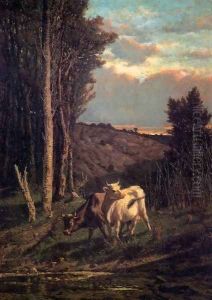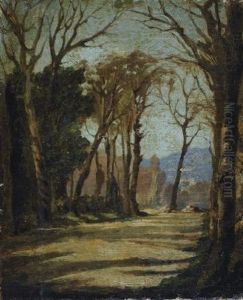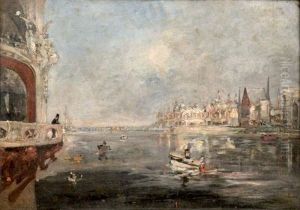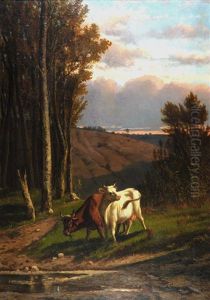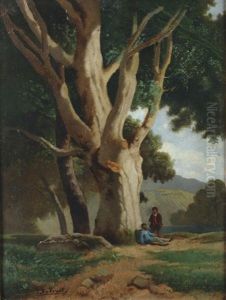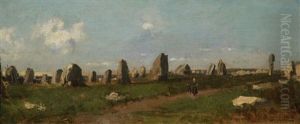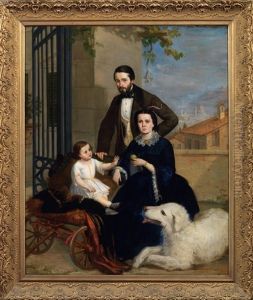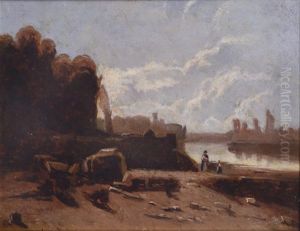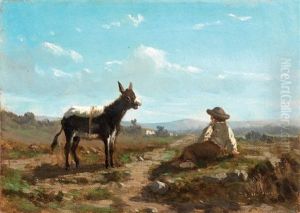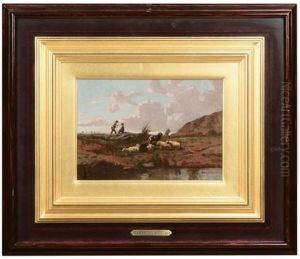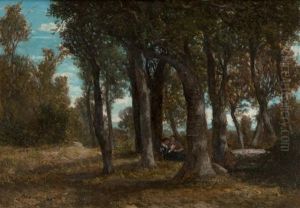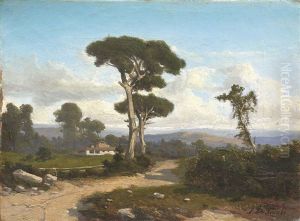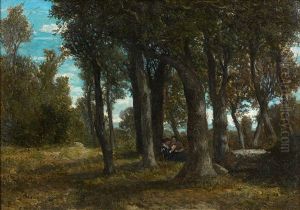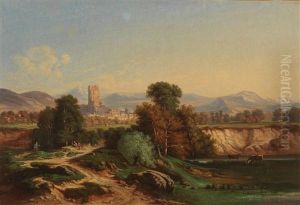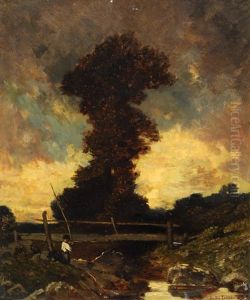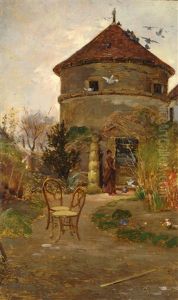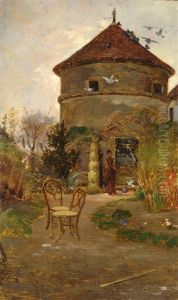Serafino de Tivoli Paintings
Serafino de Tivoli was an Italian painter, born in 1826 in Florence, which was part of the Grand Duchy of Tuscany at the time. He was among the prominent artists of the Macchiaioli group, an Italian art movement that predated Impressionism and included painters who focused on painting outdoors to capture natural light, shade, and color.
De Tivoli showed an interest in art at an early age and began his training in Florence. His initial studies were under the guidance of Giuseppe Bezzuoli and Antonio Ciseri, both of whom were influential painters in the Florentine art scene. While his early work was in the classical style, he gradually began to develop his own approach, which was characterized by a focus on light and a looser brush technique.
In the 1850s, Serafino de Tivoli was exposed to the works of the Barbizon school during a trip to France. The Barbizon painters, like the Macchiaioli, were interested in painting nature directly from life. This experience had a significant impact on de Tivoli's style and upon his return to Italy, he became a central figure in the Macchiaioli movement. The movement's name derives from the term 'macchia' which means 'patch' or 'spot' in Italian, referring to the bold strokes of color that the artists used to represent the effects of light and shadow in their landscapes and genre scenes.
Throughout his career, de Tivoli exhibited his work in various Italian cities, and his paintings were well received by critics and the public alike. His works often featured the Tuscan countryside and rural life, capturing the changing seasons and times of day with a sensitivity that was new to Italian art at the time.
De Tivoli's health began to decline in the 1870s, which limited his ability to work. Nevertheless, he continued to paint and exhibit his work. Serafino de Tivoli died in 1892 in Florence, where he had spent most of his life. His legacy is preserved through his contributions to the development of the Macchiaioli movement and the influence he had on subsequent generations of Italian artists.
